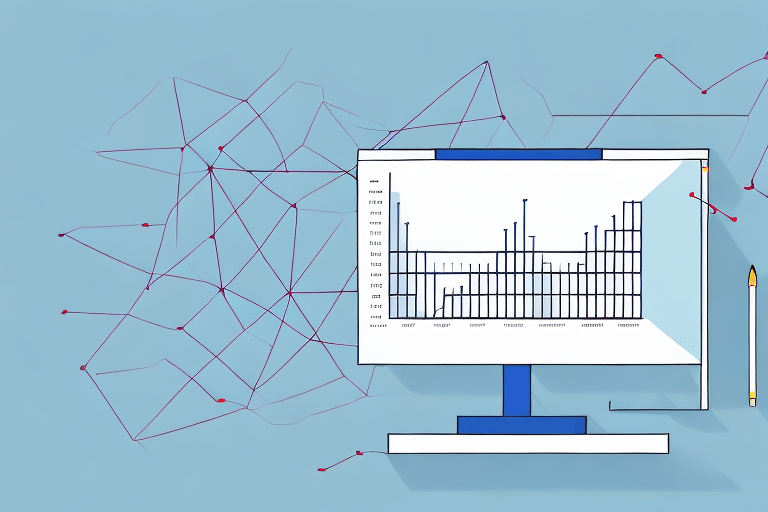Conducting a Parcel Logistics Audit for Maximum Efficiency
In today's highly competitive business landscape, efficient parcel logistics management is paramount for success. A well-designed parcel logistics system ensures timely delivery of products to customers while minimizing operational costs. However, achieving optimal performance in this critical system can be challenging. Businesses must evaluate their current logistics processes to identify inefficiencies and opportunities for optimization, making a parcel logistics audit indispensable.
Why Conducting a Parcel Logistics Audit is Important
A comprehensive parcel logistics audit is essential for businesses seeking to enhance their logistics performance. The audit identifies inefficiencies within the existing logistics system, leading to cost savings, improved delivery times, and higher customer satisfaction. Moreover, a logistics audit can uncover opportunities for innovation and optimization, including the adoption of new and advanced technologies.
Ensuring compliance with regulations and industry standards is another critical reason to conduct a parcel logistics audit. The audit helps businesses pinpoint areas where they may not meet compliance requirements, such as packaging and labeling regulations, hazardous materials handling, and customs regulations. Addressing these issues helps businesses avoid costly fines and penalties while maintaining a positive industry reputation.
Additionally, a parcel logistics audit can aid businesses in improving their sustainability and reducing environmental impact. By analyzing the current logistics system, companies can identify areas to reduce waste, optimize transportation routes, and adopt eco-friendly practices. These initiatives not only benefit the environment but also lead to cost savings and enhance brand reputation among environmentally conscious consumers.
According to a Logistics Bureau report, businesses that implement regular logistics audits can reduce their operational costs by up to 15% annually.
The Basics of Parcel Logistics Auditing
A parcel logistics audit involves a detailed evaluation of the logistics system a business uses to manage the transportation of goods. This audit assesses the entire logistics process, from order processing and packaging to transportation and delivery. It also evaluates the performance of third-party logistics providers (3PLs) or in-house logistics teams, depending on the business's logistics management model.
One key benefit of conducting a parcel logistics audit is the identification of areas where businesses can reduce costs and improve efficiency. For example, the audit may reveal the use of inefficient shipping methods or overpayment for shipping services. Addressing these issues can lead to significant cost savings.
Ensuring compliance with regulations and industry standards is another crucial aspect of parcel logistics auditing. The audit helps identify areas where a business may be falling short, such as improper labeling of hazardous materials or inadequate security protocols. Addressing these shortcomings helps avoid penalties and ensures safe and responsible operations.
For more insights on parcel logistics auditing, refer to the 3PL guide.
Understanding Your Business's Parcel Logistics Needs
Before conducting a parcel logistics audit, businesses must understand their unique logistics needs and challenges. This understanding helps identify key performance indicators (KPIs) to evaluate the logistics system's performance. For instance, for a business that relies on fast delivery to retain customers, delivery speed may be a critical KPI.
The type of products being shipped also plays a significant role. Fragile or perishable items may require special handling and packaging, impacting the logistics process and costs. Additionally, businesses that ship internationally must navigate complex customs regulations and documentation requirements.
Consider the volume of shipments and delivery frequency as well. Businesses shipping large volumes may benefit from negotiating discounted rates with carriers or utilizing a third-party logistics provider. Conversely, those with infrequent shipments might find pay-as-you-go shipping services more cost-effective.
Identifying Inefficiencies in Your Current Parcel Logistics System
An effective parcel logistics audit should uncover inefficiencies that escalate operational costs and diminish customer satisfaction. This includes identifying bottlenecks, areas of slow performance, and potential security risks. The audit should also highlight opportunities for enhancing and optimizing the logistics system.
- Lack of Real-Time Tracking: Without real-time tracking and visibility, delays in delivery and customer complaints can increase. Implementing a system that offers real-time tracking can significantly enhance customer satisfaction and reduce operational costs.
- Manual Sorting and Distribution: Manual processes are time-consuming and prone to errors. Automating parcel sorting and distribution can improve efficiency and accuracy, leading to cost reductions and better customer experiences.
According to a Investopedia article, automation in logistics can reduce errors by up to 80% and cut processing time by half.
Best Practices for Conducting a Parcel Logistics Audit
- Define Clear Objectives: Understand what you aim to achieve with the audit by establishing its scope, KPIs, and identifying all stakeholders involved.
- Collect Accurate Data: Gather relevant and precise data from internal records, customer feedback, and industry benchmarks.
- Involve Stakeholders: Engage all relevant parties to ensure comprehensive evaluation and buy-in for subsequent improvements.
- Identify Root Causes: Delve into the underlying reasons for inefficiencies rather than just addressing surface issues.
- Develop an Action Plan: Create a detailed plan based on audit findings to address identified inefficiencies effectively.
Prioritizing inefficiencies based on their impact ensures that the most critical issues are addressed first. Regularly reviewing and updating the action plan keeps the logistics system running efficiently.
How to Gather and Analyze Data for Your Audit
Data collection and analysis are foundational to a successful parcel logistics audit. Businesses need to gather accurate and relevant data that accurately reflect the logistics system's performance. Data sources include internal records, customer and stakeholder feedback, and industry benchmarks. Analytical techniques such as regression analysis and data visualization help identify patterns and correlations within the data set.
- Standardize Data Collection: Implement a consistent data collection process across all departments to ensure uniformity and accuracy.
- Use Data Analytics Tools: Leverage tools to handle large data volumes, identify trends, and uncover inefficiencies.
- Contextual Analysis: Consider the environment in which data was collected to provide a comprehensive understanding of logistics performance.
For example, if a particular carrier shows a higher rate of late deliveries, investigate external factors such as weather conditions or traffic congestion that might be contributing to these delays.
Common Challenges Faced During a Parcel Logistics Audit
Parcel logistics audits often encounter various challenges that can limit their effectiveness. These include inadequate data, stakeholder resistance, and difficulties in identifying and addressing root causes of inefficiencies. However, these challenges can be mitigated by involving all relevant stakeholders, establishing clear communication channels, and developing a comprehensive action plan based on audit findings.
- Lack of Supply Chain Transparency: Limited visibility can hinder the identification of inefficiencies. Collaborate with logistics providers to establish clear tracking and monitoring systems.
- Operational Complexity: Complex logistics operations can make it difficult to pinpoint inefficiencies. Utilize data analytics tools to analyze large data sets and identify patterns contributing to inefficiencies.
Building transparency and simplifying operations are key to overcoming these challenges and ensuring a successful audit.
Effective Strategies for Addressing Identified Issues
Once inefficiencies in the logistics system are identified, businesses must develop effective strategies to address them. These strategies should target the root causes of inefficiencies and incorporate innovations and best practices from the logistics industry. Consider variables such as customer satisfaction, delivery time, and cost reduction when formulating these strategies.
- Implement Automation: Automate manual processes to increase efficiency and reduce errors.
- Adopt Advanced Technologies: Utilize technologies like IoT, AI, and machine learning to enhance logistics operations.
- Optimize Transportation Routes: Use route optimization software to minimize fuel consumption and reduce delivery times.
- Enhance Supplier Relationships: Collaborate closely with suppliers and logistics providers to streamline operations.
Continuous improvement through regular audits ensures that logistics systems remain efficient and responsive to evolving business needs.
The Role of Technology in Optimizing Parcel Logistics
Integrating advanced technologies into logistics systems is crucial for optimizing parcel logistics. Technologies such as the Internet of Things (IoT), artificial intelligence (AI), and machine learning enable the automation of logistics processes, reduce delivery times, and improve the accuracy of parcel tracking. Additionally, route optimization software helps decrease fuel consumption and delivery costs.
- IoT Devices: Provide real-time data on parcel locations and conditions, enhancing visibility and control.
- Artificial Intelligence: Facilitates predictive analytics for demand forecasting and inventory management.
- Machine Learning: Improves decision-making processes by analyzing vast amounts of data to identify trends and patterns.
- Route Optimization Software: Calculates the most efficient delivery routes, saving time and reducing operational costs.
Embracing these technologies not only streamlines logistics operations but also provides a competitive edge in the marketplace.
Cost Savings and Other Benefits of a Successful Parcel Logistics Audit
A successful parcel logistics audit can lead to substantial cost savings for businesses. By identifying and addressing inefficiencies, companies can reduce transportation costs, warehousing expenses, and employee overtime payrolls. Beyond cost savings, other benefits include improved delivery times, enhanced customer satisfaction, and an overall boost in the logistics system's performance.
- Transportation Cost Reduction: Optimizing routes and negotiating better rates with carriers can significantly lower transportation expenses.
- Warehouse Efficiency: Streamlining warehouse operations reduces storage costs and improves order fulfillment speed.
- Employee Productivity: Automating manual tasks frees up employees to focus on more strategic activities, enhancing overall productivity.
- Customer Satisfaction: Faster and more reliable deliveries lead to higher customer satisfaction and loyalty.
Implementing the findings from a logistics audit ensures that businesses operate more efficiently and remain competitive.
Choosing the Right Third-Party Logistics Provider (3PL) for Your Business
Choosing the right 3PL is a critical decision for businesses relying on external logistics providers. A suitable 3PL should possess extensive industry experience, a strong reputation, and the capability to offer customized solutions tailored to the business's unique logistics needs. Other factors to consider include cost, technological capabilities, and the level of customer service provided.
- Industry Expertise: A 3PL with specific industry experience can better understand and address unique logistics challenges.
- Reputation: A proven track record indicates reliability and quality service.
- Technology Integration: Advanced technological capabilities, such as real-time tracking and automated systems, enhance logistics efficiency.
- Customer Service: Responsive and effective customer service ensures smooth operations and quick resolution of issues.
For comprehensive guidance on selecting a 3PL, visit our 3PL Guide.
Outsourcing vs In-House Parcel Logistics Management: Pros and Cons
Businesses face a crucial decision in managing parcel logistics: outsourcing to a 3PL or handling logistics in-house. Each option has its advantages and disadvantages, which businesses must evaluate to determine the optimal logistics management model.
- Outsourcing to a 3PL:
- Pros: Provides flexibility, scalability, and access to advanced logistics technologies without significant upfront investments.
- Cons: May be more expensive in the long run and could result in less direct control over logistics processes.
- In-House Logistics Management:
- Pros: Greater control over logistics operations, customization of processes to specific business needs, and potentially lower long-term costs.
- Cons: Requires substantial investment in infrastructure, technology, and skilled personnel, and may lack the scalability offered by 3PLs.
Businesses must weigh these pros and cons in relation to their specific needs, resources, and strategic goals to make an informed decision.
Future Trends and Innovations in Parcel Logistics Optimization
The logistics industry is continually evolving, with new trends and innovations emerging rapidly. Future trends and innovations in parcel logistics optimization include:
- Robots and Drones: Increased use of robots and drones for transportation and delivery to enhance efficiency and reduce delivery times.
- Blockchain Technology: Utilization of blockchain to secure and track parcels, ensuring transparency and reducing fraud.
- Artificial Intelligence and Machine Learning: Continued integration of AI and machine learning in logistics management systems to improve decision-making and forecast demand accurately.
- Autonomous Vehicles: Adoption of autonomous delivery vehicles to lower labor costs and increase delivery speed.
Staying abreast of these trends and integrating relevant technologies can provide businesses with a competitive advantage and drive continuous improvement in logistics operations.
Conclusion
A parcel logistics audit is a vital process that enables businesses to identify inefficiencies, optimize logistics performance, and enhance customer satisfaction. A comprehensive audit should involve all relevant stakeholders and lead to a detailed action plan addressing identified inefficiencies. By embracing new technologies and innovations and selecting the optimal logistics management model, businesses can optimize their logistics systems, resulting in cost savings, improved delivery times, and greater customer satisfaction.








